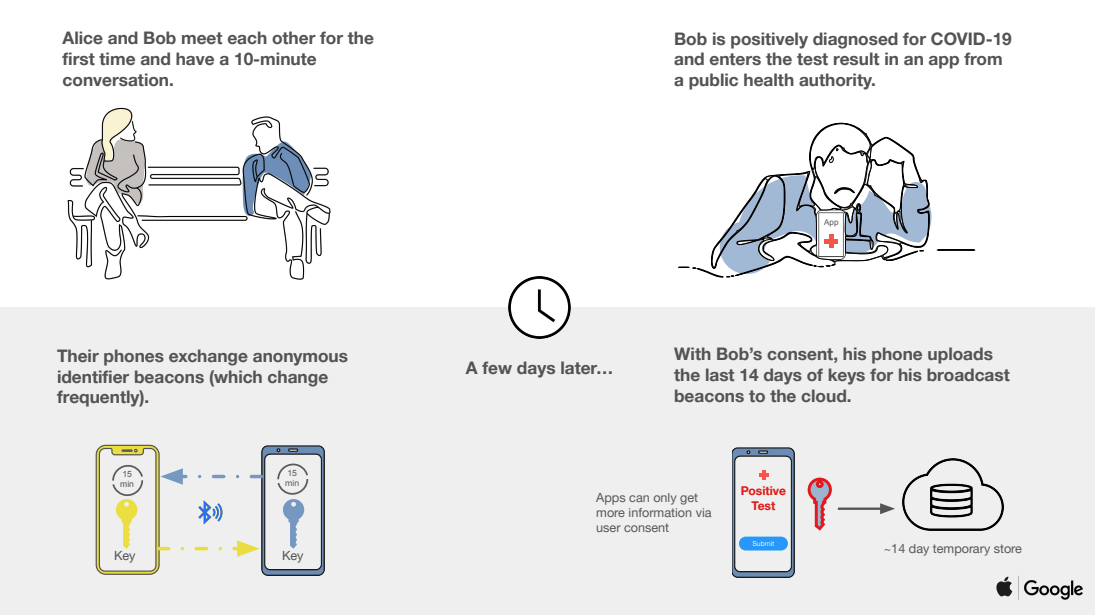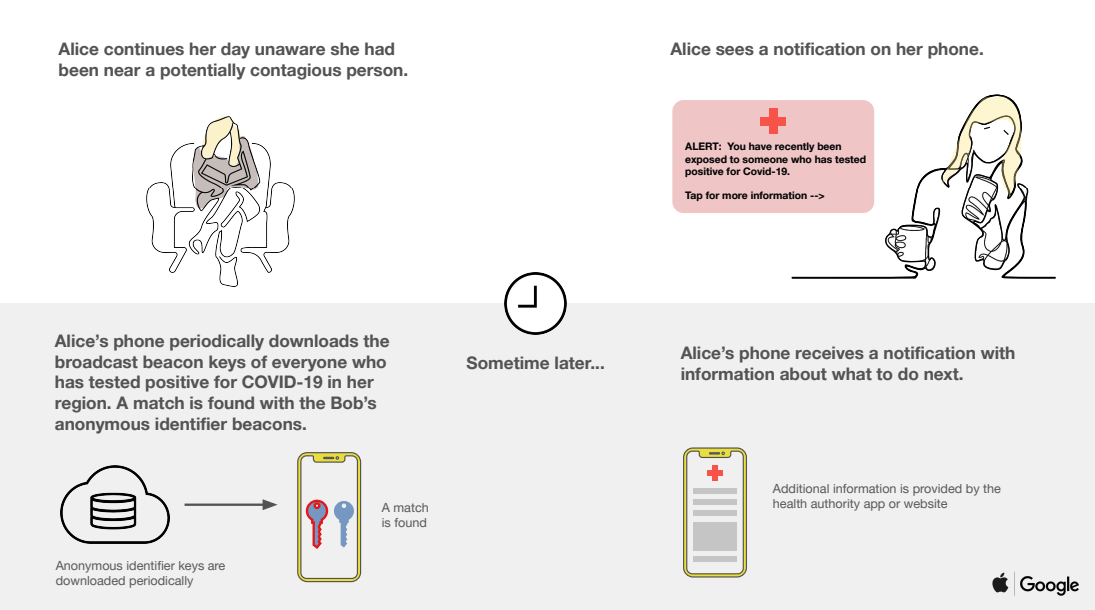Apple and Google are partnering to build a new contact tracing system into both Android and iOS, in an effort to help reduce COVID-19 spread. This would allow users to share data through Bluetooth Low Energy transmissions using approved apps from health organizations.
The overarching privacy and security constraints are summarized here:
- Explicit user consent required
- Doesn’t collect personally identifiable information or user location data
- List of people you’ve been in contact with never leaves your phone
- People who test positive are not identified to other users, Google or Apple
- Will only be used for contact tracing by public health authorities for COVID-19 pandemic management
- Doesn’t matter if you have an Android phone or an iPhone - works across both
So how does this whole thing work? iOS and Android devices that enter into each others proximity will begin exchanging and storing anonymous identifiers. If someone is positively diagnosed for COVID-10 they can optionally enter the results in an app from a public heath authority. With explicit consent you can then upload a list of the anonymous keys you have exchanged thereby providing a mechanism for others to to be alerted that they may have been in the presence of some with the virus.
Ultimately, in the absence of a vaccine I think we are months away from normalcy, however, tools like this may at least allow us to track and isolate people with more specificity, rather that shutting down entire cities or states. Apple and Google have, thus far, promised to freely publish information about this new technology. API specifications can be found here.
There are obviously questions around what privacy looks like, and most of that appears to be addressed by anonymity. What may be more important are the ways this system may flag things as false positives. For example two people in close proximity but with appropriate Personal Protective Equipment (PPE), or two people who may talk to each other behind protective glass or some such. Or lets take the opposite where two people are in proximity because of shared surfaces but are never actually in the same room at the same time.
Either case provides challenges, however, they are both moot if testing is not free and ubiquitous.



Comments are closed.